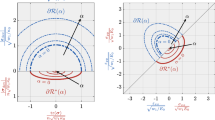Abstract
In finite element analysis of cracked bodies, it is quite common to represent the material law (stress-strain curve) in a simplified form e.g. bilinear approximation. Many steels, however, have a more complex material law, which includes a perfectly plastic region before work hardening. Two dimensional finite element analyses have shown that fracture parameters, such as the J-integral, are very sensitive to variation in material law for shallow cracks, and the writers have now commenced three dimensional analyses for surface semi-elliptical cracks in plates. Some computations have been made for specimens tested experimentally by Dodds and Read [1], and the results show that what appears to be a reasonable approximation of the material law is inadequate in modelling the deformation behaviour, and that more accurate modelling of the material law, especially the plastic part immediately after yield, which may include perfectly plastic behaviour, is required for reliable results.
Similar content being viewed by others
References
R.H. Dodds (Jr.) and D.T. Read, Experimental and analytical estimates of the J-integral for tensile panels containing short center crackes, International Journal of Fracture 43 (1990) 47–67.
C.L. Lau, M.M.K. Lee and A.R. Luxmoore, Methodologies for predicting J-integrals under large plastic deformation-I. Further developments for tension loading, Engineering Fracture Mechanics 49:3 (1994) 337–354.
C.L. Lau, M.M.K. Lee and A.R. Luxmoore, Methodologies for predicting J-integrals under large plastic deformation-II. Single edge notch specimens in pure bending, Engineering Fracture Mechanics 49:3 (1994) 355–369.
C.L. Lau, M.M.K. Lee and A.R. Luxmoore, A shallow crack assessment scheme for generalised material behaviour in tension, Engineering Fracture Mechanics 51:5 (1994) 763–785.
M.M.K. Lee and A.R. Luxmoore, J-integral sensitivities to geometry and stress-strain behaviour in shallow edge-cracked bars under tension, in Proceedings of the Asian Pacific Conference on Computational Mechanics, Hong Kong (1991) 891–896.
J.C. Newman and I.S. Raju, An Empirical Stress Intensity Factor Equation for the Surface Crack, NASA Langley Research Center, Hampton, USA (1981).
ABACRACK-Three Dimensional Surface Crack Generator, Advanced Computational Mechanics, AEA Technology, Warrington (1989).
ABAQUS, User's Manual, Version 5.3, Hibbitt, Karlsson and Sorensen Inc. (1994).
ABAQUS POST, User's Manual, Version 5.3, Hibbit, Karlsson and Sorensen Inc. (1994).
Author information
Authors and Affiliations
Rights and permissions
About this article
Cite this article
Boothman, D.P., Lee, M.M.K. & Luxmoore, A.R. The sensitivity of J-integrals to material law variations for semi-elliptical surface cracks. Int J Fract 80, 365–375 (1996). https://doi.org/10.1007/BF00018513
Received:
Accepted:
Issue Date:
DOI: https://doi.org/10.1007/BF00018513




